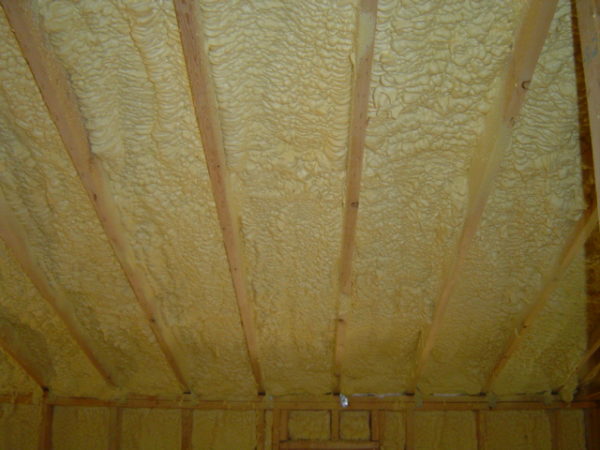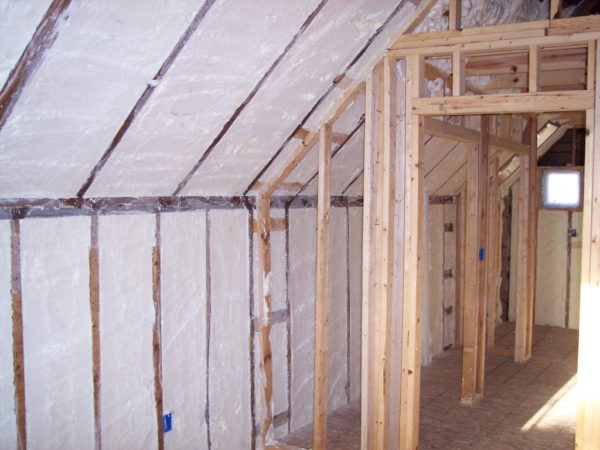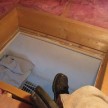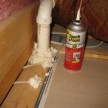Encapsulating an Attic Space
Value of Creating a Conditioned Attic Space
Encapsulating an Attic Space means including the attic in the thermal envelope by installing insulation under the roof sheathing and not in the attic floor, joist bay. While any insulation can be used, we feel the best practice is to use spray foam. Typically, this is done with open cell or closed cell insulation.
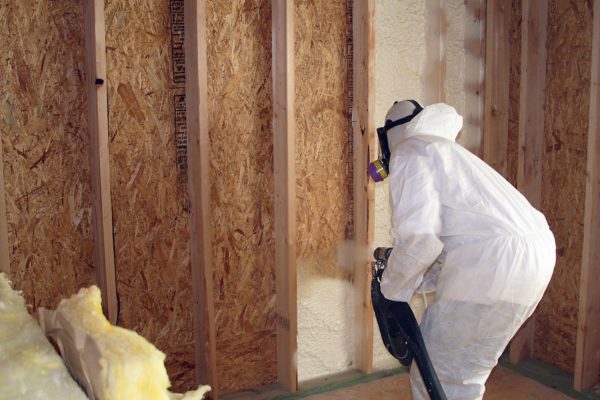
Contractor blowing foam insulation
The end result is the attic becomes a conditioned space. This results in stable temperatures inside the attic, as opposed to a ventilated attic, which sees huge seasonal temperature swings.
Benefits of Using Spray foam
Applying an open or closed cell spray foam will encapsulate your attic space. The foam stops the “chimney effect,” most homes have, and can reduce heat loss by 50%.
Another benefit can be found during the warmer summer seasons. The outdoor pollen and humidity is prevented from entering the home through the soffit and ridge vents. This significantly reduces the amount of work the HVAC has to do to dehumidify the home making it much more efficient and comfortable. For those with allergies, this could greatly reduce your seasonal suffering.
Bringing Ductwork into Thermal Envelope
There are more Pros than Cons to encapsulating your attic space. One of the biggest returns on investment is that it helps regulate the attic from temperature fluctuations, resulting in reduced HVAC costs.
In a nutshell, HVAC operation becomes more efficient. It does this by remaining cooler in the summer and warmer in the winter.
Reduction in Air Leaks / Ice Dams
Encapsulating the attic space eliminates the concern of air leaking from the main house into an unconditioned attic. Air leaks often are seen in wire, pipe and access penetrations into the attic floor from below. Heat loss, through air leakage, is one of the ingredients in ice dams.
Eliminate Frost and Mold on the Underside of Roof
In the winter, air leaks show up as frost on the underside of the roof. Frost gets into the attic from air leaks, or attic bypasses. Frost eventually melts and leaves plywood, framing and insulation wet. Eventually mold grows. Learn More about frost and mold in the attic.
The best way to prevent frost from accumulating in an attic is to seal off attic air leaks or encapsulate it. Once you seal the air leaks, the attic will be frost free.
Sealed-Combustion Furnaces
It should be noted that “direct-vent” HVAC equipment (sealed-combustion furnaces) are the best choice for an encapsulated attic. When you encapsulate an attic it becomes a sealed “unvented attic assembly.” A sealed-combustion furnace uses a separate air intake and exhaust. This is needed because a sealed attic cannot support a vented HVAC unit.
Conditioned Attics have a Few Drawbacks
Creating a conditioned attic is a solution to a fundamental design flaw (locating ductwork or HVAC equipment outside of a home’s thermal envelope) but come with their own set of drawbacks.
Sealed Attic Disadvantages
Encapsulating an attic with spray foam is more expensive than installing insulation on an attic floor. It’s also harder to locate roof leaks or repair rotten roof sheathing than in a home with an unconditioned attic. I always recommend that the roof condition be evaluated and uprated as needed.
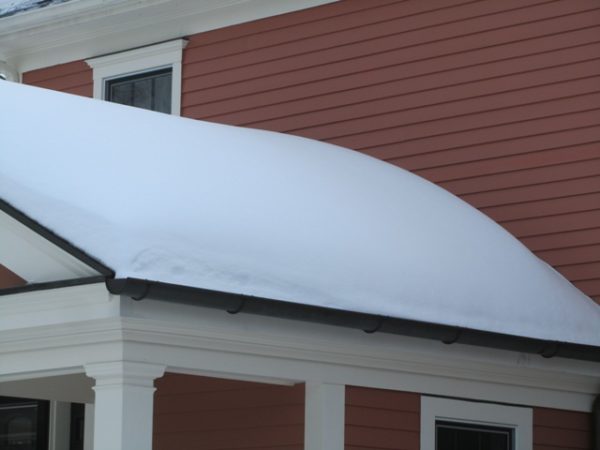
Sealed Attic Space – No Ice Dams
Sealed Attic Advantages
One BIG advantage of sealing the attic is that it prevents whole house air leakage is reduced saving heating and cooling energy costs. Learn more about air leaks here. Increased attic temperature also means decreased moisture which means decreased, or no mold growth.
Another benefit is that it will significantly reduce, if not eliminate, ice damming in the winter. The spray foam in the rafters, allow you to eliminates air leak sealing in attic floor, sealing around recessed lights or access doors and hatches. All of which can be difficult to do properly.
Mechanical systems and ductwork in the attic often leak warm air and contribute to ice gaming. If installed in a sealed attic, they operate more efficiently, with less strain on equipment. The controlled attic temperature and humidity, decrease the possibility of condensation and creates a conditioned space for storage.
Spray foam also helps reduce rodents infiltration and seal out insects since it eliminates the need for roof venting. It is also a great solution for complex roof venting designs which often cause issues with ice damming.
Over the years we’ve used a few different spray foam contractors. It’s taken us a bit to vet them all, but we’ve found a company, InsulationDoneRight.com, that were pleased to partner with.
InsulationDoneRight uses superior USA made Green Guard approved products, has a highly-trained team that is professional and competent.
When your reputation matters, its important to use good sub contractors and not just go low bid!
Conclusion
Creating a conditioned attic space may cost more up front, but you will reap the rewards over time. When you compare the Pros vs. Cons – you see that the Pros far outnumber the setbacks of cost and damaging roof leaks.




